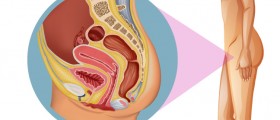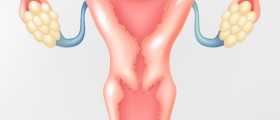
A woman’s reproductive age begins with menstruation and ends with menopause. Reproductive age refers to the ability of the woman to reproduce and give birth to a child. However, female reproductive system does not always function smoothly because it is directly linked to many other processes in the body. This commonly results in different gynecological problems that affect women in their reproductive age.
Common Gynecological Problems in WomenDysmenorrhea and PMS
Gynecological health issues most frequently experienced by women of reproductive age are painful menstrual periods or dysmenorrhea and PMS. These menstrual disorders can be quite bothersome. PMS or premenstrual syndrome refers to a wide range of symptoms that usually occur a week prior to menstruation. Premenstrual syndrome includes physical as well as emotional symptoms that commonly resolve when menstrual bleeding begins. These symptoms include mood swings, irritability, depression, tender breasts, food cravings, water retention, acne, headache, abdominal bloating, fatigue, constipation or/and diarrhea.
Once menstrual bleeding starts, PMS can be replaced with dyshmenorrhea. This condition is very common and affects around 60% of women. Dyshmenorrhea represents menstrual cramps which can be sometimes so severe that they interrupt daily activities of affected women. Painful symptoms of dysmenorrhea can be relieved with painkillers such as ibuprofen or acetaminophen.
Endometriosis
Endometriosis is a disorder that develops when endometrium, the tissue that normally makes up inner lining of the uterus and starts to grow outside the uterus. Endometriosis is a painful condition that may even disrupt fertility in women. Endometrial tissue can form on the ovaries, lower abdomen, fallopian tubes, bowel and the bladder. In rare cases it may even affect the intestines and rectum.
In endometriosis, this abnormal endometrial tissue acts similarly to cells inside the uterus and may bleed during menstrual cycle. Endometrial growths can develop in the ovaries and form cysts known as endometrioma or chocolate cysts. These cysts have chocolate appearance as they are filled with dark, old blood which is probably due to a bit of menstrual blood that found its way upwards into the fallopian tubes.
Endometriosis causes pelvic pain, painful periods and spotting before menstrual bleeding begins. It is also associated with pain during intercourse, heavy bleeding, miscarriages and infertility. Endometriosis can be treated with pain relievers, hormone therapy or surgery.
Fibroids
Fibroids are another common gynecological issue in women of childbearing age. Fibroids are benign tumors that develop inside the uterus and may cause fertility problems in women.
The exact cause why some women develop uterine fibroids is unknown but it is believed that hormones may be responsible for the condition. In most cases fibroids do not produce symptoms and are usually incidentally detected during pelvic ultrasound. However, fibroids may cause painful and heavy bleeding, pelvic pressure, lower back pain and even repeated miscarriages.
Pelvic Inflammatory Disease (PID)
Pelvic inflammatory disease is inflammation of female pelvic organs due to an infection. Pelvic inflammatory disease can be caused by normal bacteria or by bacteria that cause sexually transmitted infections like gonorrhea and Chlamydia. The disease begins when infection spreads from the cervix to the uterus, fallopian tubes and ovaries.
Pelvic inflammatory disease is typically accompanied with pelvic pain, fever, pain during intercourse and nausea. The disease can cause scarring in the fallopian tubes that can interfere with fertility. The standard treatment for pelvic inflammatory disease is antibiotics.

















Your thoughts on this
Loading...